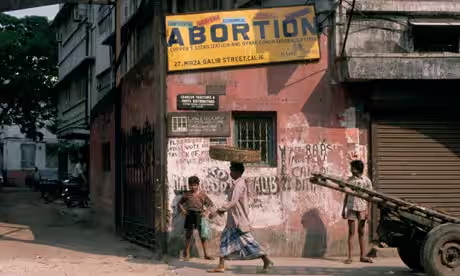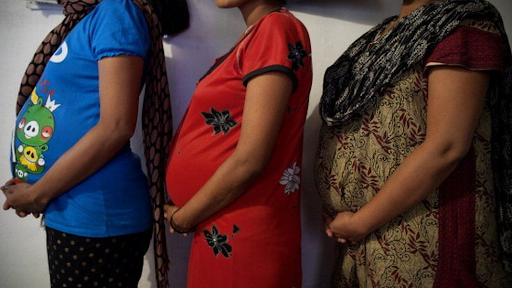A Comprehensive Guide to Abortion in India
The overturning of Roe v. Wade, the pivotal U.S. Supreme Court ruling that acknowledged the right to abortion set off a global ripple effect. It sparked discussion and debate across social media platforms on reproductive freedom around the world – including in India. Some lauded the country’s legal protection of abortion rights, while others pointed to existing disparities and challenges that still needed attention, emphasising accessibility and cost.
The recent resurgence of this conversation in the public sphere has drawn attention to the country’s legal perspective on abortion. Even as public awareness is slowly on the rise, there remains a lack of knowledge and discourse on many issues surrounding abortion. These include the specifics of legal provisions, the procedural aspects of abortion, and potential side effects remain relatively unexplored topics.
Given this context, delving into the intricacies surrounding abortion in India is vital. Those who have found themselves in the situation of an unwanted pregnancy can often be unaware of the process and its implications – socially, legally, and medically. As the world watches and engages in these global conversations, it is essential to comprehend the nuanced and evolving narrative of abortion in India.
Decoding Abortion in India: Legalities, Healthcare, and Society
In a country where cultural values and legal frameworks intersect, a contentious issue such as termination of pregnancy is shaped by a multitude of factors. A comprehensive understanding of the issue through its various dimensions – legal, medical, and social – makes it a much more approachable and less daunting topic for those who might need to seek out such a procedure.
i) Legal Status
The legal landscape of abortion in India has undergone significant transformations, marked by historical shifts and evolving interpretations. Before the 1960s, India had strict laws restricting access to abortion. The process was criminalised unless the mother’s life was at stake – in which case it was permissible to abort the foetus. However, in response to societal demands for regulation, the Medical Termination of Pregnancy (MTP) Act was enacted in 1971, emphasising medical reasoning over religious or ethical concerns. The act has been amended many times since its enactment. The 2002 amendment introduced medical abortion pills like mifepristone and misoprostol as approved methods for terminating pregnancies. Most recently, the 2021 amendments extended the gestational limit to 24 weeks for rape survivors and incest cases. It broadened access to safe and lawful abortion services for therapeutic, eugenic, humanitarian, and social reasons, ensuring comprehensive care for all. Under this amendment, pregnancy can be terminated within 20 weeks due to contraceptive failure, regardless of marital status. Consent is required from pregnant individuals above 18 years old; minors or mentally ill individuals need written consent from their guardians. Only registered medical practitioners can perform terminations, following guidelines in approved government hospitals or facilities.
ii) Methods and Side-effects
The most common method for ending early pregnancies is Vacuum Aspiration (Suction evacuation), but it is a surgical process that carries risks like infections and uterus problems. Using medicines for abortion depends on factors like timing and dosage. Surgery is better if one wishes to prevent future pregnancies too. If the pregnancy is up to 7 weeks, a drug-induced abortion using Mifepristone with Misoprostol is a good option. The success of drug-induced abortion hinges on factors like dosage, regimen, and gestational age. Common side effects of this procedure may include pain, bleeding, nausea, vomiting, diarrhoea, headache, a feeling of warmth, chills, and dizziness, along with fatigue. Informed decision-making after counselling is vital. The person getting an abortion can choose between both methods and should have the final say in what they are comfortable with. Abortion costs in India can range anywhere from ₹5000-₹30,000.
iii) Accessibility and Social Attitudes
Despite its progressive laws, India faces significant challenges. Unsafe abortions lead to eight women’s deaths daily and account for a substantial portion of maternal deaths. Between 2007-2011, 67% of abortions carried out in India were done so in an unsafe manner. Gynaecologists often engage in moral policing and slut-shaming, complicating the situation. The stigma surrounding premarital sex leads unmarried persons to dubious and unsafe clinics to seek abortions, while doctors may discourage abortions for married persons. Rural areas witness the use of unsafe methods, risking infections and death. Moral policing and societal pressure coupled with high prices make abortion inaccessible, except for privileged individuals. Sensitising medical practitioners and prioritising reproductive freedom can be a step forward in making India truly progressive in reproductive rights.
Alternative Options: Is Abortion the Right Choice for You?
While laws in India are in favour of reproductive freedom, a myriad of societal factors, as well as personal concerns, may lead to a person disregarding abortion as an option, even if the pregnancy is unwanted. Since termination of pregnancy is no longer an option, there are several alternatives available for individuals facing unplanned pregnancies. These may include choosing to put the child up for adoption once born, seeking out support services, as well as familial and social support. Some may choose to raise the child themselves, even if the pregnancy was unplanned. Proper usage of contraception methods – condoms, IUDs, vasectomy procedures, and so on– can help prevent future unwanted pregnancies. It is vital for individuals facing these choices to explore each option thoroughly, consider their circumstances, and make a decision that aligns with their values and needs. Consulting with medical professionals, counsellors, and support organisations can provide valuable guidance in making the right choice for them.
CONCLUSION
Reproductive freedom and the choice to terminate a pregnancy, at the end of the day, is a narrative that goes far beyond its legal status to encompass the complex tapestry of societal values, healthcare access, and bodily agency of individuals with uteruses. Candid and open conversations around abortion and reproductive freedom hold the power to not only provide crucial information to those in need but also to break down the walls of stigma that surround them. They can amplify the voices of those seeking agency over their bodies and also work towards fostering a more compassionate and understanding society. In embracing the complexities and nuances of abortion lies a step toward ensuring that everyone’s reproductive choices are respected, validated, and supported and paving the way for a future where bodily autonomy and comprehensive healthcare are accessible to all.
Author



